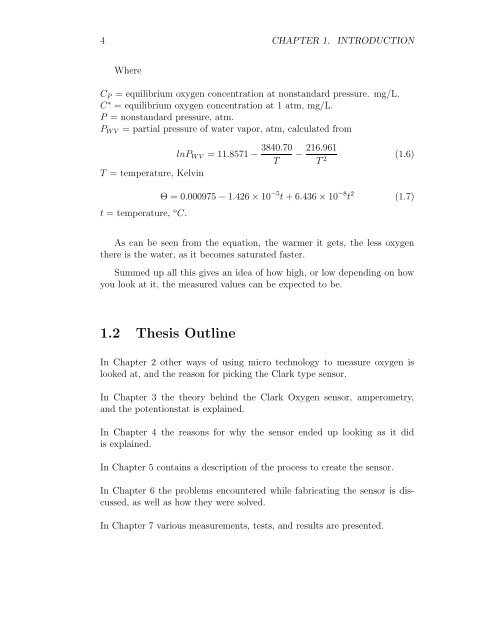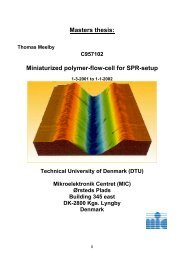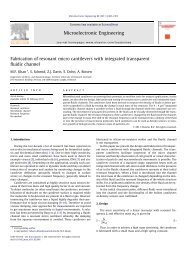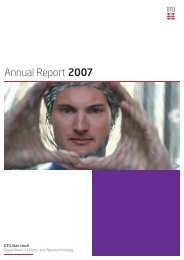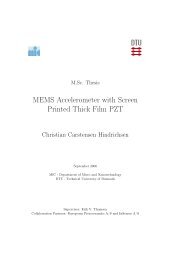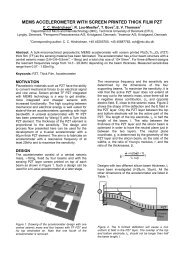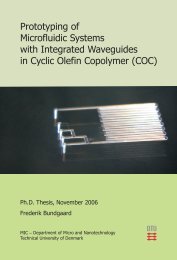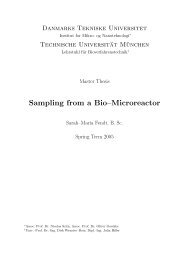Development of a Oxygen Sensor for Marine ... - DTU Nanotech
Development of a Oxygen Sensor for Marine ... - DTU Nanotech
Development of a Oxygen Sensor for Marine ... - DTU Nanotech
You also want an ePaper? Increase the reach of your titles
YUMPU automatically turns print PDFs into web optimized ePapers that Google loves.
4 CHAPTER 1. INTRODUCTION<br />
Where<br />
CP = equilibrium oxygen concentration at nonstandard pressure. mg/L.<br />
C ∗ = equilibrium oxygen concentration at 1 atm, mg/L.<br />
P = nonstandard pressure, atm.<br />
PW V = partial pressure <strong>of</strong> water vapor, atm, calculated from<br />
lnPW V = 11.8571 − 3840.70<br />
T<br />
T = temperature, Kelvin<br />
t = temperature, o C.<br />
− 216.961<br />
T 2<br />
Θ = 0.000975 − 1.426 × 10 −5 t + 6.436 × 10 −8 t 2<br />
(1.6)<br />
(1.7)<br />
As can be seen from the equation, the warmer it gets, the less oxygen<br />
there is the water, as it becomes saturated faster.<br />
Summed up all this gives an idea <strong>of</strong> how high, or low depending on how<br />
you look at it, the measured values can be expected to be.<br />
1.2 Thesis Outline<br />
In Chapter 2 other ways <strong>of</strong> using micro technology to measure oxygen is<br />
looked at, and the reason <strong>for</strong> picking the Clark type sensor.<br />
In Chapter 3 the theory behind the Clark <strong>Oxygen</strong> sensor, amperometry,<br />
and the potentionstat is explained.<br />
In Chapter 4 the reasons <strong>for</strong> why the sensor ended up looking as it did<br />
is explained.<br />
In Chapter 5 contains a description <strong>of</strong> the process to create the sensor.<br />
In Chapter 6 the problems encountered while fabricating the sensor is discussed,<br />
as well as how they were solved.<br />
In Chapter 7 various measurements, tests, and results are presented.


